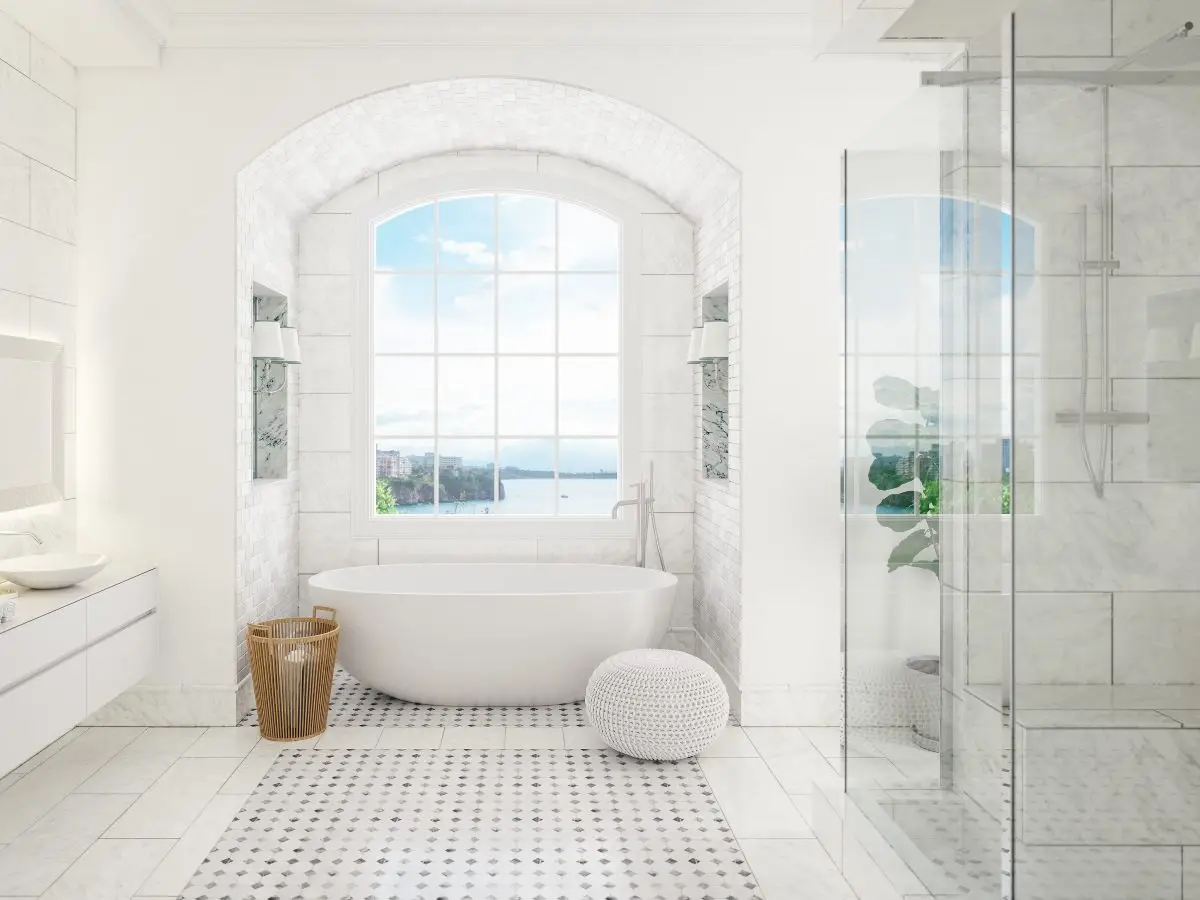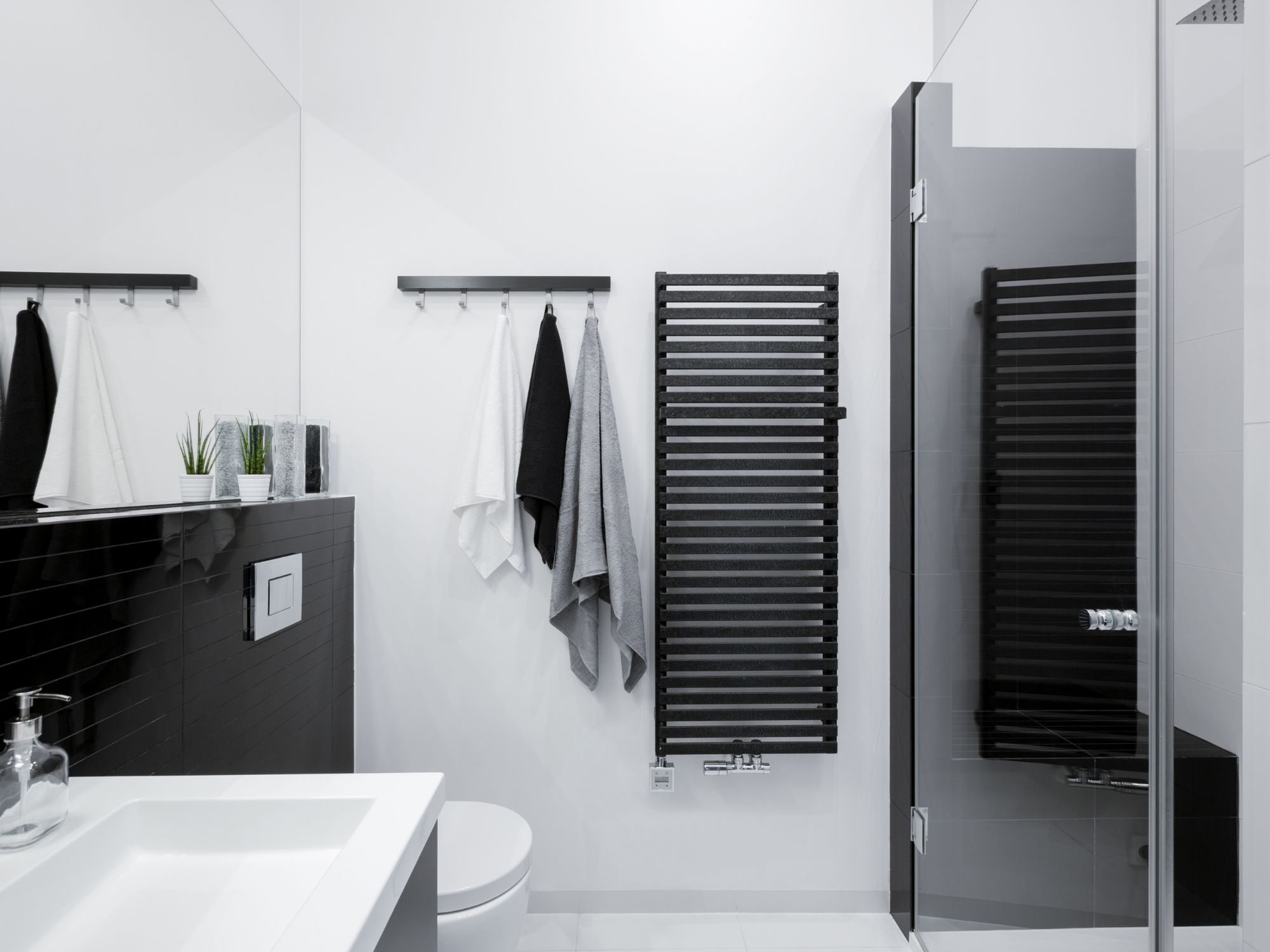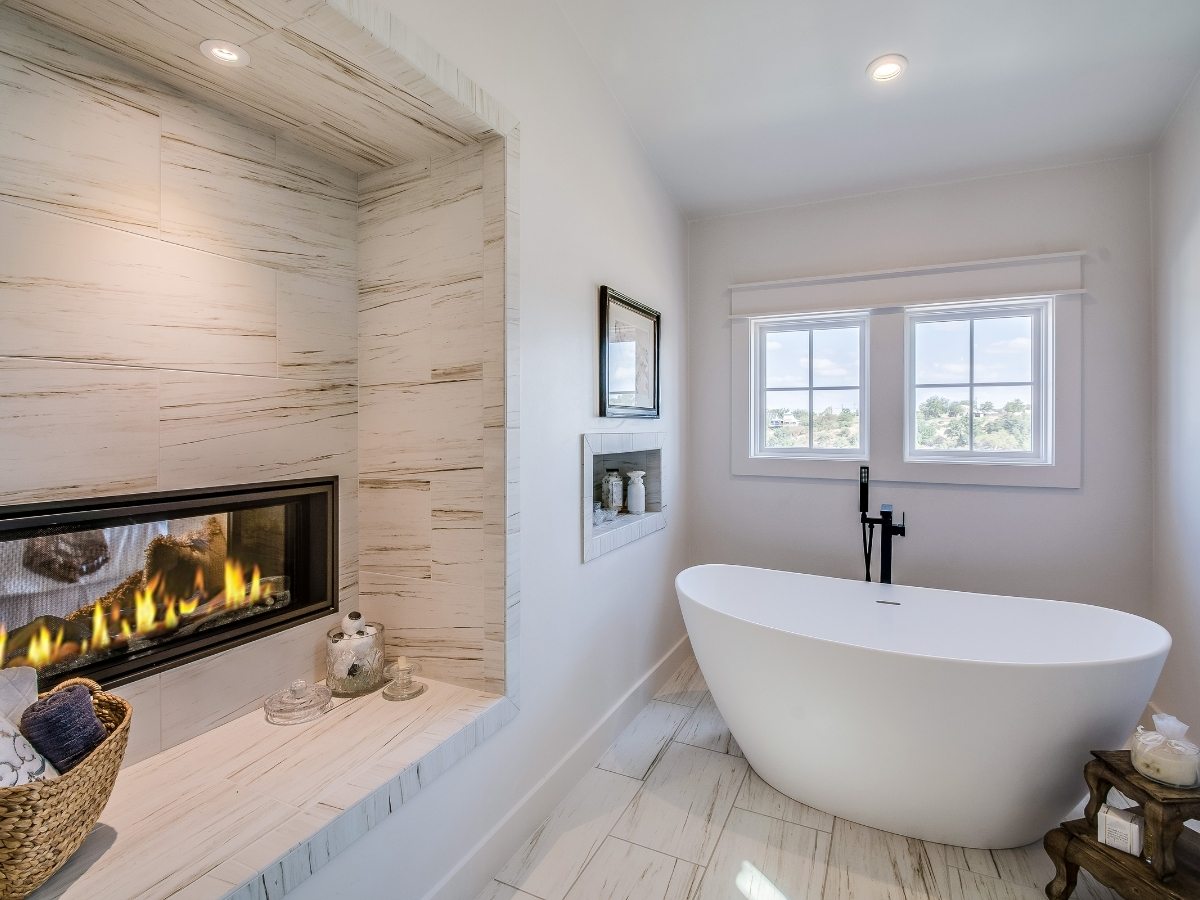This post may contain affiliate links which means I may receive a commission for purchases made through links. I only recommend products that I have personally used or curated specifically after reviewing and ensuring its quality! Learn more on my Private Policy page.
1. Introductions
Wallpaper Install is a blend of artistry and precision, demanding attention to detail while allowing for creative expression. Wallpapering requires the right knowledge, skills, materials and tools.
Wallpaper tells a story, sets a moods, and injects character into the spaces. In this guide we provide a step by step process to demystify the wallpapering process. Now that you have done your fair share of research lets get down to work!
If you have textured walls and are trying to decide what type of wallpapers to choose for your wall please visit our recent blog post.
2. Installing Wallpaper
Wallpapering might seem daunting, but with the right preparation and patience, it’s entirely manageable. The key lies in understanding each step of the process, from choosing the right paper, paste, understanding pattern matches and the actual hanging process.
While there’s a learning curve, especially in navigating corners or wallpapering around obstacles, the process becomes smoother with practice. Having the right tools and taking your time to ensure precision with the first strip sets as this sets the tone for the rest of the room. Please review this YouTube Vid for illustration for Peel and Stick wallpaper. Each wallpaper type may pose unique installation challenges.
3. Wallpaper Calculator – number of Wallpaper rolls needed
To determine the number of rolls to purchase use the wallpaper calculator below:
Determine Total Wall Area
Height x Width e.g. 6m x 6m = 36 sq.m
Deductions for Windows and Doors
Area of a standard Door = e.g. 2m x 0.8m = 1.6 sq.m
Area of a standard window = e.g. 1.5m x 1.2m = 1.8 sq.m
Subtract the Total Area of Doors and Windows from the Total Wall Area e.g. 36sq.m – 1.8sq.m – 1.6sq.m = 36sq.m -3.4 sq.m = 32.6 sq.m
Determine Wallpaper Coverage:
Each roll of wallpaper typically covers about 5.3 square meters (57 square feet), but please check the specific one you want to purchase.
Divide the Total Net Wall Area (after subtracting windows and doors) by the coverage area of a single wallpaper roll. e.g 32.6sq.m / 5.3 sq.m = 6.7 Rolls ( 7 Rolls)
Consider Pattern Repeat:
If the wallpaper has a design that needs matching, you might need more wallpaper to ensure the design aligns. The number of additional rolls required for pattern matching depends on the size of the repeat in the pattern and the dimensions of the wallpaper roll itself.
On average, a complex or large-repeat pattern can lead to more waste as you’ll need to align the pattern correctly between each strip, which sometimes means cutting away and discarding portions of a roll of paper to get the patterns to line up.
Pattern Repeat General Guideline:
For Small or No Repeat (up to 6 inches): One extra Roll for every 10 rolls.
Based on the above example you would need 0 additional Roll
For Medium Repeat (6 to 12 inches): You might need One additional roll for every 5 or 6 rolls.
Based on the above example you would need 1 additional Roll
For Large Repeat (12 inches and above): Depending on the size of the repeat and the height of your walls, you might need to buy an additional roll for every 4 rolls.
Based on the above example you would need 2 additional Roll
Excess for Trimming and Errors:
Buy One or Two extra rolls for errors, miscalculations, future repairs, or trimming.
In Summary The “Total # of Rolls Required” Calculation:
Total Number of Rolls based on Wallpapered Area = (Total Wall Area – Windows and Doors Area Coverage) / Coverage Per Roll
Then Add # of Rolls for Pattern Repeat which can be Small, Medium or Large
Add number of Extra Rolls for Trimming & Errors Rolls
Round up when determining the number of rolls.
Summary Calculations For The above Example:
Small Repeat = 7 Rolls + 0 + 1 = 8 Rolls Total
Medium Repeat = 7 Rolls + 1 + 1 = 9 Rolls Total
Large Repeat = 7 Rolls + 2 + 1 = 10 Rolls Total. You may wish to buy two Rolls for errors.
4. Installing Wallpaper – Determine the Type of Wallpaper You need
With the plethora of wallpaper options in the market, selecting the right one can be daunting. The key is to match the room’s function with the wallpaper type.
If it’s a kitchen or a bathroom, where moisture is frequent, vinyl wallpapers are preferred. They are moisture-resistant and can withstand the occasional splash.
On the other hand, textured wallpapers are great for living areas. They not only add depth to the entire room but can also cleverly hide imperfections in the walls.
Every wallpaper has its benefits. Therefore, assessing the room’s needs and understanding what type of wallpaper to use is crucial.
For a detail understanding of what non texture wallpapers suits which room refer to our Blog Post
Here is a YouTube Vid illustrating installation of Wallpaper requiring paste application which contrast with the peel and stick shown above.
For Non Textured Wallpaper Click Image below

5. Wallpaper Install- determine Which wallPaper and For Which Room
Selecting the right wallpaper for a specific room is an interplay between aesthetics and practicality. For instance, kitchens and bathrooms require wallpapers that can withstand humidity and splashes.
Vinyl wallpaper, known for its resilience, often tops the list for these areas. On the other hand, bedrooms, being personal sanctuaries, might favor a softer texture like grasscloth or the vintage luxury of flocked wallpapers.
Understanding the characteristics and limitations of each type of wallpaper will guide you in making choices that are both beautiful and lasting. Always consider the room’s function, its exposure to light, and the amount of traffic it receives.
6. Wallpaper Install – Materials and Tools needed
Wallpapering isn’t just about the paper and paste. The tools and materials you have on hand can make the difference between a successful project and a challenging one.
For starters, you’ll need:
- A wallpaper Table
- A pasting brush/paint brush or paint roller to apply the adhesive
- A smoothing brush or wallpaper smoother.
- A seam roller to ensure that the edges are perfectly fused together and to remove air bubbles.
- A utility or breakaway knife or snap-off blade for trimming excess paper. You may want to also keep scissors handy as an alternate.
- A damp sponge to wipe off excess paste.
- A bucket of warm water
- A measuring tape, spirit level, and the all-important plumb line
Gathering all the necessary tools before beginning ensures you’re not scrambling midway through the project.
Wallpaper primer Next, clean the walls with a sponge and mild soapy water, removing any dust or grease. Fill in any holes or cracks with filler, then sand until smooth. Finally, apply a coat of wallpaper primer to help the paste adhere properly.
This step is important follow the instructions of the manufacturer.
If you need to remove wall paper you will need to use a perforator to create small holes in the old wallpaper, a steamer and/or spray solution to loosen the adhesive.

7. Wallpaper Install – trade Terms to Know
As with any specialized task, wallpapering comes with its jargon:
Booking: Refers to allowing the paper to sit and absorb paste for a few minutes. It’s like letting the wallpaper acclimate.
Design Repeat: Refers to the vertical distance between where the pattern is identical again. So, if you have a floral design, the repeat would be the distance from one flower to the next identical flower vertically.
Pattern Repeat: Highlights the distance between the start of a pattern and its next identical point. indicate how the design should align from one strip to the next. Some wallpapers have straight matches, where the pattern aligns perfectly strip to strip, while others might have a drop match, where the pattern staggers between strips. Always cut at the same place to ensure you can use all the pieces and to minimize wastage.
Plumb Line: A straight vertical guideline to ensure the wallpaper hangs perfectly straight.
Knowing these wallpapering terms ensures that you’re not caught off guard when navigating wallpaper DIY videos or reading instructions.
8. Wallpaper Install – prepping the Walls
If starting with a blank smooth wall then wallpaper can be applied readily. if not, then prepping the walls to hang wallpaper means more than just a quick wipe down. It includes rigorous cleaning to ensure no dirt or grease is present. Small dents, screw holes, or even minute irregularities should be attended to by filling with a suitable filler.
Post filling, this is sanded to ensure a smoother surface. This step is not only for aesthetics but primarily to ensure that the wallpaper adheres smoothly and uniformly. The better the prep, the smoother the final outcome.
Old wallpaper and remnant paste must be stripped away any old wallpaper remnants. This step might need specialized tools or solvents, especially if the old wallpaper was glued on very securely. Removing nails, wall décor, or any other obstructions is also pivotal.
Then, clean the walls meticulously with mild soap and water and when dry apply a primer. This step will seal the wall and provide the best possible adhesion for the wallpaper.
9. Installing Wallpaper – LayOut The Room
Before diving into wallpapering, it’s beneficial to visualize how the wallpaper will lay out in the room. Start by determining the room’s focal point. This might be a fireplace, a feature wall, or where the main furniture is placed.
You typically want to start wallpapering from this focal point. Laying out the room in advance ensures that the most visible portions of the room have full, uncut strips of wallpaper, and any cuts or joins are in less noticeable areas.
This planning stage is pivotal for rooms with patterned wallpapers, ensuring patterns match seamlessly across the room. take note of door frames, window frames and other openings on the wall.
10. visualize and preplan your Complex Designs in Advance
For wallpapers with intricate designs or large wallpaper pattern matches, laying them out in advance helps in understanding how they’ll align on the wall. Spread the wallpaper strips out on a clean floor, aligning the patterns. Take note of any adjustments that need to be made prior to cutting or applying paste to the paper.
This visualization can save time and reduce the risk of mismatches when wallpapering.

11. Wallpaper Install – do use a Plumb Line
One of the fundamental first steps before you start wallpapering is adding a vertical line on the wall. This vertical line, usually drawn using a chalk-loaded tool, ensures that the wallpaper hangs straight.
In properties where walls might not be perfectly perpendicular to the floor, this becomes especially crucial. Starting your wallpapering with a reference line ensures that as you progress, each subsequent strip remains aligned.
Even if you trust your eye, using a line as a reference always ensures accuracy and saves you from possible alignment headaches down the line.
12. Installing Wallpaper – Measure and Cut Wallpaper accurately
Wallpapering requires some initial prep work on the paper itself. Firstly, always double check the wallpaper rolls for any defects.
Measurement is key in the wallpapering process. Start by measuring the height of your walls and add at least 2 extra inches for wiggle room at the top and bottom.
Using a straight edge or ruler will keep your cuts clean. Remember, it’s always better to err on the side of cutting a piece slightly longer than needed—you can always trim excess later. This is especially true for windows and doors that can be at a slight angle.
When cutting, ensure straight lines and, if working with patterns, consider pattern matches to maintain design consistency i.e. design repeats. Each cut piece should start and end with the same part of the pattern.
This ensures a seamless look once everything is up on the wall. Finally, some wallpapers might require a pre-application of paste, while others might be pre-pasted. Determine what your wallpaper needs and prep accordingly.
If you can lay strips of wallpaper side by side on the floor of large surface that would be very helpful in deciding how the patterns fit together.

13. Wallpaper Install – Apply Wallpaper Paste evenly
Whether you’re working with pre-pasted wallpaper or applying adhesive, ensure a generous, even layer of wallpaper paste is applied.
When applying paste, work from the center of the paper outwards, ensuring the edges are well-covered. This prevents the paper from lifting once on the wall.
After applying the paste, remember to “book” the wallpaper, letting it sit for the manufacturer’s recommended time before adding it to the wall. This makes the paper more malleable and ensures better adhesion.
You can opt for an “apply paste the wall” approach instead as this can make handling of the wallpaper easier – either way refer to wallpaper supplier instructions.

14. Wallpaper Install – apply sufficient Paste to wall
A common pitfall many fall into during wallpapering is skimping on the paste. The adhesive is the bridge between the wall and the wallpaper so when applying, one should be generous.
A liberal application ensures a strong bond and provides wiggle room when positioning the wallpaper. It also prevents any unwanted bubbles or wrinkles. Always start installing wallpaper from the top working your way down and a little away from the corner.
Too little paste, and the wallpaper might not stick well, leading to peeling corners or bubbles.
Remember, it’s always better to be a tad more generous with the paste than to find out later that sections of your wallpaper are coming loose.
For traditional wallpaper hanging methods, apply an even coat of paste with a wallpaper brush, paint brush, paint roller or remove the back of peel off wallpapers before wallpaper installation for pre pasted paper. Follow manufacturer’s instructions.
Please review this YouTube Vid for illustration of how to apply wallpaper paste to wallpaper.

15. Leave Paste long enough Before installing Wallpaper
This is where understanding wallpapering nuances comes into play. When you apply paste to the wallpaper, you don’t hang it immediately.
This waiting period, known as “booking,” allows the paste to penetrate the wallpaper, making it more pliable and easier to work with.
Typically, you’d leave the paste on the wallpaper for about 10-15 minutes. However, always refer to the wallpaper manufacturer’s recommendations. Not allowing enough time can lead to difficulties in adjusting the wallpaper on the wall.
Conversely, waiting too long can make the paste dry out, affecting adhesion. Remember, timing is pivotal for the paste to work its magic.
16. Wallpaper Install – Starting location is important
Starting point matters. Typically, it’s best to begin wallpapering behind a door or another inconspicuous spot, ensuring any mismatches or errors remain hidden. However, for rooms with a focal point like a fireplace or a large window, starting there might make sense.
Use a plumb line as a guide to ensure the first strip is straight. This first strip serves as your guide, so taking extra time to ensure its precision pays off in the long run.

17. Installing the First Strip
This is the moment of truth in hanging wallpaper. After applying the wallpaper adhesive and waiting the necessary booking time, align the top of your wallpaper with the ceiling, leaving a small overhang. Smooth the paper down gently, removing air bubbles as you go.
Use a wallpaper smoother or brush for this. Make sure the edge aligns with your plumb line. Once hung, trim any excess paper at the top and bottom for a neat finish.

18. Apply Wallpaper at and Around Corners
Corners can be a bit tricky, but with the right approach, they’re manageable. When wallpapering to a corner, always measure from the last installed strip to the corner and add an extra inch for overlapping the two pieces of wallpaper. This ensures a neat finish without gaps. Once the strip is in place, use a smoother to press the wallpaper into the corner.
Then, move on to the adjoining adjacent wall by overlapping about an inch of the wallpaper onto the next wall, ensuring a seamless transition.
For outside corners, it’s best to wrap the wallpaper around the corner and then trim any excess. Then, measure and cut a new piece for the next wall, remembering to account for pattern matches.
19. Trim Strip at Ceiling carefully
After hanging the wallpaper, the next step is to create a neat finish by trimming any excess at the ceiling and baseboard. Using a sharp utility knife and a straight edge, trim the excess wallpaper carefully.
The key here is to apply consistent pressure to avoid tearing the paper and to ensure a straight cut. Keeping your knife blade sharp will make this process smoother and prevent unsightly jagged edges.

20. Trim Around Windows and Door precisely
Trimming around windows and doors requires patience and precision. Once the wallpaper is hung over these areas, make diagonal cuts from the wallpaper’s edge to the corner of the door or window frame.
Then, trim the excess. For the top and bottom, press the wallpaper into the wall crease and trim the excess. A sharp blade is your best friend here.
21. Apply Wallpaper Around Obstacles carefully
Obstacles like light switches, light fixtures, outlets, and vents can be tricky. After applying wallpaper over them, make an X-cut across the obstacle’s center, then trim away the excess, leaving just enough to tuck behind.
Always ensure the power is off when working around electrical outlets.
22. Get Ride of Excess Paste
After applying wallpaper, you might notice some excess paste on the surface. Using a damp sponge to gently wipe away this excess is a good practice. Ensure the sponge is not overly wet, as too much moisture can damage the wallpaper. Having a pasting table make this task optimal and easy to handle the wallpaper once it is pasted.
Clean in a gentle, circular motion to avoid smearing or pushing paste under the wallpaper’s edges.
23. Dos and Don’ts to Avoid When hanging Wallpaper
Dos
Do Measure Accurately: Accurate measurements are crucial when purchasing wallpaper to ensure you have enough rolls. It’s better to buy a little more than you need to account for any errors and pattern matching.
Do Prep Your Walls: Prepare your walls thoroughly. They need to be clean, dry, and smooth for the wallpaper to adhere properly. Applying primer is a good idea as it prepares the surface for wallpaper paste.
Do Check the Batch Numbers: When buying wallpaper, ensure all rolls have the same batch number. Slight differences in color can occur between batches, and this will help you avoid any discrepancies in your design.
Do Book Match the Patterns: If your wallpaper has a pattern, make sure it aligns from strip to strip. This is known as “book matching” and can make a significant difference in how the finished project looks. You must ensure you account for wallpaper patterns as this will require proper planning. Attempt to match as close as possible without overlapping the cut line.
Do Use the Right Tools: Having the right tools can make the process much easier. Essential tools include a wallpaper smoother, utility knife, level, paint roller, paint brushes, and tape measure.
For a detail understanding of Dos and Don’ts regarding wallpapers installation please refer to our recent Blog Post.
Click Image Below

Don’ts
Don’t Rush: Take your time. Wallpapering is a detailed job, and rushing can lead to misalignments, bubbles, or tears in your wallpaper.
Don’t Skip Over Wall Repairs: If your wall has holes or cracks, be sure to repair them before starting. Wallpaper will not hide these imperfections; it may even make them more noticeable.
Don’t Assume Walls are Square or Plumb: Always use a level or plumb bob to make sure your wallpaper is being hung straight. Never rely on the corners or ceiling line of your room to be perfectly square or level.
Don’t Dry Trim: Always wet trim when using a utility knife. This will make the knife glide more smoothly and prevent tearing the wallpaper.
Don’t Use Too Much Paste: An excessive amount of paste can cause the wallpaper to bubble or peel off the wall. Apply a thin, even layer.
By following these dos and don’ts, you’ll be well on your way to a successful DIY wallpaper installation project.
For a detail review of wallpaper removal, selection and installation please read our blog post article – 72 of the most Frequently Asked Questions (FAQs)
24. Your Wallpaper Project is Done!
After you have completed all these steps, congratulations are in order!
You’ve just successfully installed wallpaper like a pro. Enjoy the fresh, new look of your room.
With a bit of patience and attention to detail, wallpaper installation can be a fulfilling DIY project that gives your space a professional touch.
Remember, as with any DIY project, not rushing the process is important. best outcomes are realized when you do not cut corners. The guide provided above offers a general overview. However, depending on the type of wallpaper, the specific instructions might vary slightly.
Always follow the manufacturer’s instructions when available.
25. Featured Related Blog Article












